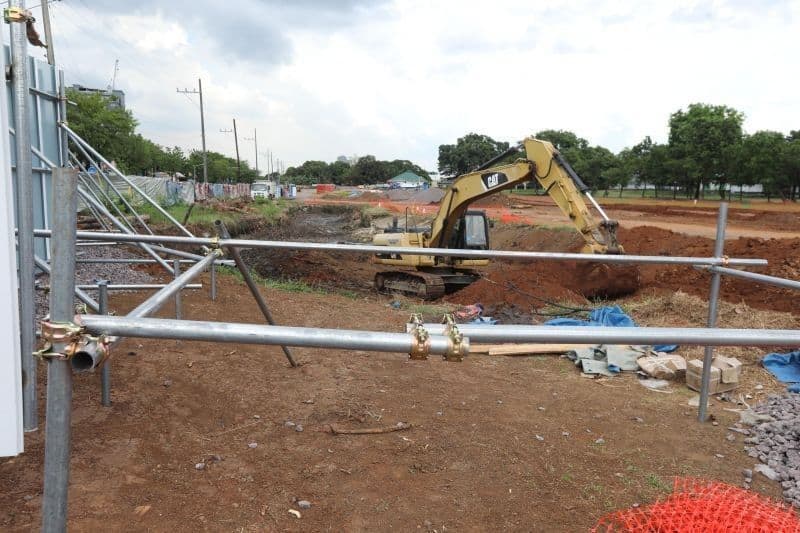
MANILA, Philippines — Infrastructure spending of the Duterte administration grew in March, although the turnout was slower compared to the preceding month as pandemic restrictions continued to block building activities.
The national government spent P107 billion in capital outlays in March, up 37.4% year-on-year, the budget department reported Thursday, a result which was slower than a hefty 103.9% annual uptick the previous month.
Historically, the amount of infrastructure investments in March did go beyond what traditionally is rolled out at the start of the dry season when construction gains steam for the good weather. But the budget agency itself cautioned against reading too much on the data, as last year’s surprise disruptions from initial lockdowns gave some low-base boost in this year’s numbers.
At the same time, the month-on-month decline appears to be a glimpse of things to come in April, when a return to tighter pandemic restrictions in Metro Manila and four urban areas, which collectively represent over half of gross domestic product, likely put on the brakes in public construction activity, which expanded over 26% in the first 3 months.
“It’s really a challenging time for spending, particularly for infrastructure spending,” Ruben Carlo Asuncion, chief economist at UnionBank of the Philippines, said in a text message. “It was clear in Q1 GDP that government spending was higher. But Q2 may be further challenged with the recent lockdown in NCR +.”
Compounding the problem on the ground are labor shortages. While the construction sector is one of industries that add the most workers for the past 2 months, contractors are still complaining of labor shortages, which the socioeconomic planning agency earlier blamed on inability of workers to reach workplaces because of insufficient public transport capacity.
Without workers, projects are moving much slowly while builders spend more on health protocols to protect what is left of their manpower. “Business is still risky. It’s still survival especially for MSMEs (micro, small and medium enterprises),” said Ibarra Paulino, executive director at Philippine Constructors Association, an industry group that claims to corner 80% of state projects.
“Expensive COVID-19 health and safety protocols are here to stay… We still experience skilled workforce shortage,” he added.
In March, budget department data showed much of the outlays came from the public works department, the government’s main infrastructure agency that made final and partial payments for projects already completed, and those ongoing, respectively. Those alone were enough to push direct infrastructure spending by 41.4% on-year to P87.8 billion.
The balance of P19.2 billion were funds for the same purpose granted to cities, municipalities and provinces. The amount was up 22.7% from year-ago levels.
Still owing to the low base, the first quarter tally for capital outlays amounted to P293.8 billion, up by an annualized 49.1%. Faced with a likely slowdown in April due to stricter prohibitions, Paulino is hoping the trend would not last, especially with a pledge from the government to ramp up infrastructure building to support economic growth.
That in turn, would be good news for contractors counting on government projects to get back to business while private companies hold back from large investments. “Contractors are still expecting prompt and security of payments,” Paulino said.
Article and Photo originally posted by Philippine Star last May 20, 2021 2:58pm and written by Ian Nicolas Cigaral.







More Stories
Vista Land Celebrates 50 Years with Sandiwa: An Event Honoring Leadership, Legacy, and the Filipino Dream of Homeownership
Vista Land Celebrates Love Month in Ilocos Region
Vista Land Bridges Cebuano Heritage and Progress with Valencia by Vista Estates